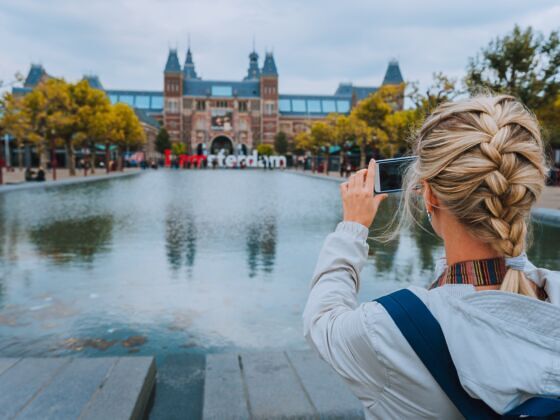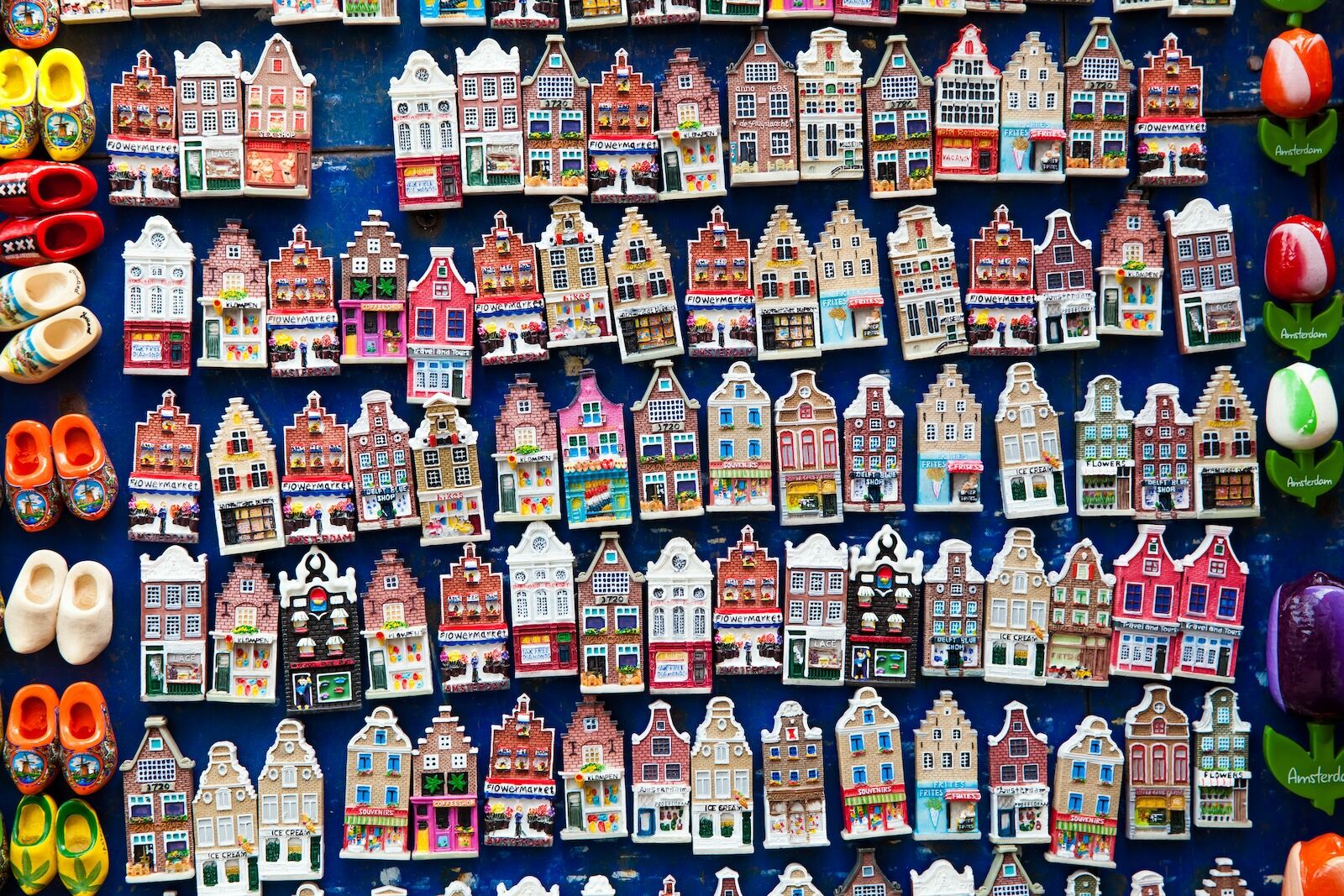Amsterdam, like many other European cities, is facing an overtourism problem. The numbers don’t lie. In the year 2000, the Dutch capital broke a record when it welcomed over 4 million visitors. In 2019, the city’s enthusiasm for unbridled tourism had curbed: 10.2 million visitors came to Amsterdam, which has a population of about 820,000, that year and spent 21.8 million nights in the city.


Amsterdam Is Aggressively Fighting Overtourism. Here's How 6 Major Initiatives Will Impact Your Next Visit
Since 2020, encouraged by the residents, the city of Amsterdam has been taking drastic measures to not only to rein in tourist numbers with a cap of 20 million overnight stays annually, but also repel troublesome visitors, improving the quality of life for local residents in the process.
“There has not been one trigger [for Amsterdam to decide to fight overtourism],” says Eva Plijter, spokesperson for the Amsterdam City Council, in an email. “Amsterdam has slowly become busier and busier and residents, especially in the city center, have seen major changes in our city.”
Increased busyness is only one of the many and multi-faceted problematic consequences of mass tourism. Demand for more tourist accommodations such as Airbnbs can lead to a hike in housing prices and locals being forced out of the rental market, like what a lot of mountain towns in the US are currently experiencing. Anti-tourist protests in Spain have rocked the country this year. More visitors can also accelerate the early damage of infrastructures that were previously meant only for residents, such as roads, public transports, and hospitals. But overtourism can also pave the way to the deterioration of the culture of a locale — when every shop, restaurant, and bar cater to the needs tastes of outsiders rather than those of residents.
Amsterdam’s ultimate goal is to have solved the problem of overtourism and its negative effects by 2035, as explained in the city’s 10-page report: “Vision on Tourism in Amsterdam in 2035.”
And it goes without saying that Amsterdam’s initiatives to fight overtourism, while being long-term goals, will impact your future trips there.
Over email Plijter outlined the main measures taken by the Amsterdam tourism authorities to slow the growth of tourism and design a more sustainable tourism model.
1. Reduce the supply of home rentals
Home owners in Amsterdam can rent out their primary residence, or part of it, whether a house or a houseboat, to a maximum of four people at a time and for a maximum of 30 nights per calendar year. To do so, however, they need to obtain a permit for which the application costs $77 (71 €). They also need to report on every rented period to the local authorities before their guests arrive. Failing to comply to all these conditions and rules can result in fines up to $23,546 (21,750 €).
The above-mentioned rules on private rentals mean that the pool of available accommodations is limited for those who wish to vacation in Amsterdam. With fewer rentals on the market, the price of available accommodations is also bound to be higher, discouraging many visitors.
2. Slow, and eventually stop, adding to the number of available hotel rooms
On April 17, 2024, Amsterdam’s local government announced that no new hotels will be built in the city unless another one closes. If a new hotel is to be built in place of another, it must have the same number of rooms or fewer, and it must be better, such as more sustainable.
While this means that, in the long term, the hotels on offer to visitors will be of better quality, it also means there will be fewer of them. Much like with private rentals, fewer hotel rooms available will translate into higher-priced hotel accommodations.
In an effort to decongest the city center and spread tourism more evenly throughout the Amsterdam Metropolitan Area (AMA), some hotel projects might be given the go-ahead if they are planned outside of the city limits.
Hotels that close down and are not replaced will be transformed in homes for residents and offices, as part of the City Center Approach program, created in 2020.
3. Stop the building of new shops or facilities aimed at tourists

Photo: Alexander Tolstykh /Shutterstock
The ban on new tourist shops in the city center started as early as 2017 and is ongoing. It prevents new businesses that solely focus on tourists, as opposed to residents and workers, such as souvenir shops, ice cream shops, and even bike rental shops, among others, from opening.
Visitors to Amsterdam may have fewer choices for the purchase of their snacks and knick-knacks, but they’ll also get a more authentic experience of what it’s like to live in Amsterdam while visiting the city center.
4. Reduce the number of cruises
In an effort to reduce crowds and pollution, Amsterdam is cutting down on the number of river cruises and sea cruises coming to the city. The city council wants to halve the number of river cruise ships in the city, allowing a maximum of 1,150 calls per year in 2028. The same goes for sea cruises which dock in the city’s cruise terminal; they will be reduced from 190 to a maximum of 100 per year starting in 2026. The city council plans to move the sea cruise terminal to outside of the city center by 2035.
Visitors who wish to visit the city on a cruise will have fewer options to choose from in the next few years. Starting in 2035, cruise passengers will also have to travel from further away to reach the Amsterdam city center.
5. Introduce campaigns that attract a different kind of visitor
Amsterdam is very anxious to shake off its image as the European capital of debauchery, and drive away all those who come to the city to party excessively. The 2023 “Stay Away” campaign, aimed at young British male tourists who come to the city to take advantage of its relaxed rules on drugs and sex, was meant to do just that. Further similar image campaigns targeting partiers from all over Europe, including the Netherlands and the UK, are in the works.
Expensive fines for public drunkenness ($108 or 100 €) and noise pollution ($162 or 150 €), earlier closing times for bars and brothels, a ban on drinking alcohol and smoking cannabis in public, as well as potentially moving brothels from the Red Light District, also aim at cutting down on partiers.
If you plan to come to Amsterdam only to overindulge in alcohol, weed, and sex, think again because you’re not wanted, and the local authorities will fine you if you misbehave.
6. Increase the tourist tax to slow tourism and ensure tourists contribute more to keeping the city liveable
Currently, hotels, camping grounds, private rentals, and bed & breakfasts all have to pay a tax of 12.5 percent of the overnight rate if they welcome out-of-town visitors for overnight stays. Sea and river cruise companies pay a “Day Tripper” tax of $15.15 (14 €) per passenger.
Of course, higher tourist taxes mean higher prices on accommodations and cruises for visitors.